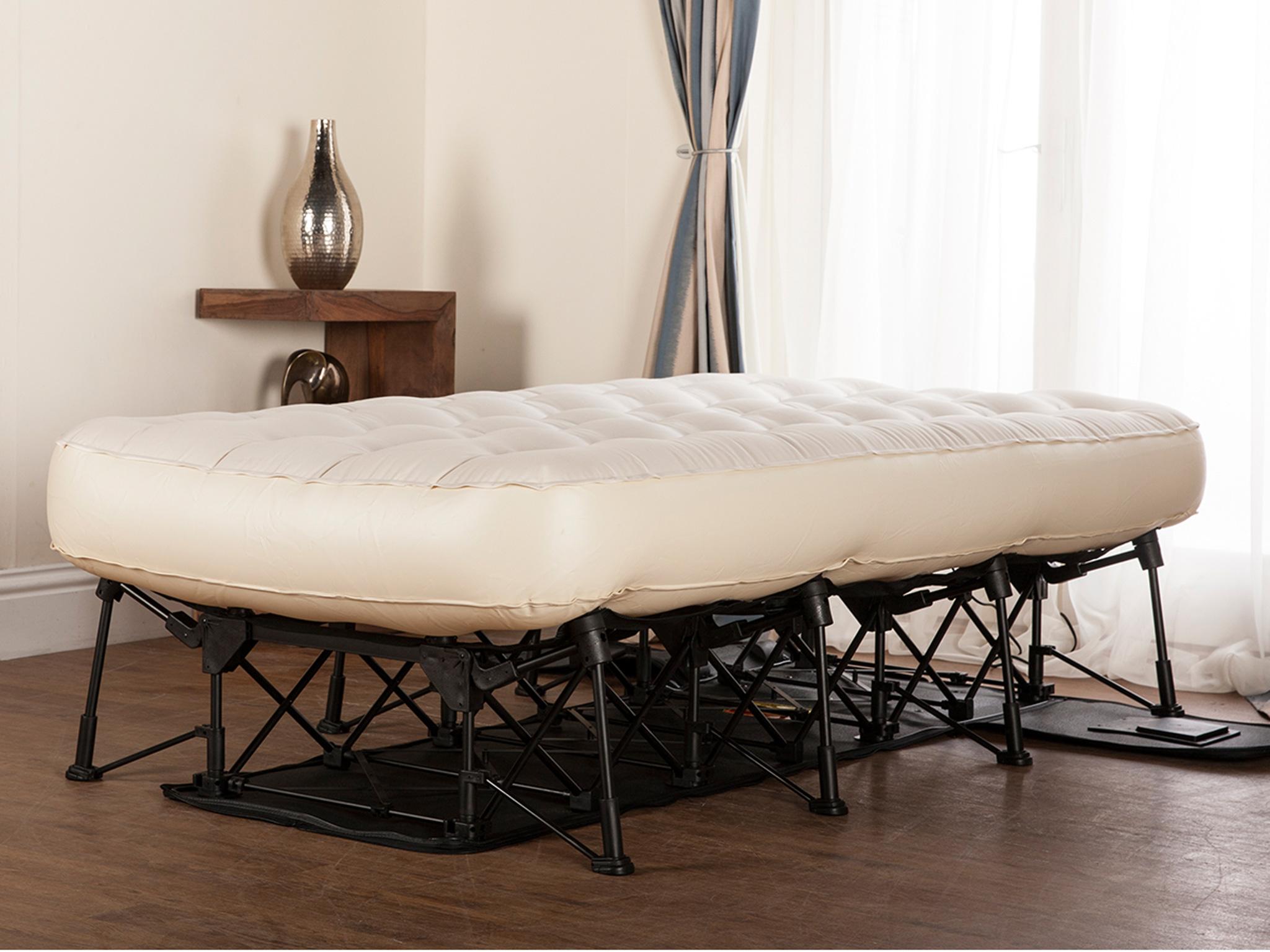Creating a universal house design for people with disabilities is the first step towards a more accessible lifestyle for everyone. It involves creating a manufactured home that complies with the requirements of the Americans with Disabilities Act (ADA). Universal house designs aim to make it easier for people with disabilities to access the entire house, from the entrance to the bedroom, kitchen, and bathroom. The universal house designs allow for wider doorways, lower countertops, levered door handles, single lever faucets, and easy access to appliances. These features ensure that people with disabilities and seniors can access different parts of the house without needing help from a caregiver. Universal House Designs for People with Disabilities
Smart home technology is already making waves in the construction industry and could make an enormous difference for people with disabilities. From voice-controlled lighting systems to automated air-conditioning systems and emergency response systems, smart home technology enables people with disabilities to enjoy greater independence at home. These advanced home systems are powered by AI, so all a person needs to do is give commands with a voice or hand gesture. Smart home design also includes features like motion sensors, automatic door locks and window blinds. These features are designed to make a person’s life easier at home and ensure safety even when the person is home alone. Smart Home Design for People with Disabilities
Barrier-free house designs provide disabled people with the opportunity to move around the house without being hindered by physical barriers. This type of house design involves getting rid of thresholds, doorways, and passage-ways, and ensuring there is enough clearance between the furniture and walls for people in wheelchairs to move around. Barrier-free house designs require professional support and should be built in accordance with the National Building Code of Canada. The designs are created keeping in mind the safety of the occupants, which is why a wide range of materials are used, depending on the individual’s accessibility needs. Barrier-Free House Designs for Disabled People
Wheelchair-friendly house designs are becoming increasingly popular these days, due to the growing awareness of disability rights. These designs include features like ramps, lever-operated handles, bathrooms without thresholds, wide hallways, and adjustable cabinets and countertops for wheelchair access. Wheelchair-friendly designs are not limited to residential structures; public places like parks, libraries, and stadiums are also trying to accommodate people with disabilities. Ramps, curb cuts, and paved pathways are just some of the features that make these places more accessible for wheelchair users. Wheelchair-Friendly House Designs
Elderly and disabled people often have to face more challenges due to mobility issues, and this is why it is important to create accessible house plans. These plans help to ensure safety in all parts of the house, due to lack of mobility. This includes wide and well-lit hallways, shred carpets and non-slip flooring, lever-operated handles, and low countertops. The number of elderly and disabled people is increasing, which is why new house designs must keep in mind the needs of this community. Accessible ramps, grab bars in the bathroom, wheelchair-friendly air conditioners, and adjustable shelves are just some of the features that make an accessible house design work. Accessible House Plans for Elderly and Disabled People
Adaptable house designs are designed keeping in mind the health conditions of the residents, such as physical disabilities, limited mobility, visual or hearing impairments. Adaptable house designs involve creating wide open spaces that allow for easy movement within the house, as well as adjustable countertops and cabinets for people in wheelchairs. These designs also include features like higher thresholds for wheelchair users, visually separated living and dining areas to accommodate visually impaired people, and furniture that doubles as support for people with limited mobility. These features enable people with health conditions to stay in their own homes comfortably. Adaptable House Designs for Health Conditions
Disability-friendly home design solutions are aimed at making life easier for people with disabilities. These solutions include features like wheel-in showers, adjustable countertops, specially-designed furniture that can be used from a wheelchair, and adjustable lighting to reduce glare. However, this is not all; disability-friendly home design solutions also involve ensuring the ease of movement within the house, making sure that furniture is not blocking the view of people in wheelchairs, and building wider doorways and hallways for easier navigation. Disability-Friendly Home Design Solutions
Assistive technology has enabled people with disabilities to stay independent and enjoy greater freedom in their homes. Assistive technology includes computer hardware and software, speech synthesizers, electronic augmentative communication systems, and assistive listening systems. Assistive technology is incorporated into functional house designs, which means that the technology is customized to each person’s needs. This helps to make the house environment more accessible, so people with disabilities can remain independent. Functional Home Designs with Assistive Technology
Adaptable home design with smart home devices is especially beneficial for elderly and disabled people. Smart home devices, such as voice-controlled lighting systems, automated air-conditioning systems, and emergency response systems, enable people to enjoy greater independence at home. These devices are powered by AI and can be operated with a voice or a hand gesture. Smart home devices can also keep an eye on the house, so people with disabilities can stay safe even when they are alone. Adaptable Home Design with Smart Home Devices
Special needs home design involves incorporating features into the house that make it easier for people with disabilities to access the different parts of the house. These features can include wide doorways and hallways, low countertops, lever-operated handles, and accessible bathrooms. Special needs home designs must comply with the National Building Code of Canada. This type of house design needs to be designed by professionals, so people with disabilities can move around the house safely and comfortably. Special Needs Home Design with Easy Accessibility
Differentiating Home Design for the Disabled
 As the needs of people living with disabilities become more visible, and their voices become more heard, home design for the disabled has become a priority in the home design industry. At Disability House Design, the needs of disabled individuals and their families come first. We focus on
creating unique home designs
that are tailored to suit the individual needs of people living with disabilities.
As the needs of people living with disabilities become more visible, and their voices become more heard, home design for the disabled has become a priority in the home design industry. At Disability House Design, the needs of disabled individuals and their families come first. We focus on
creating unique home designs
that are tailored to suit the individual needs of people living with disabilities.
Making Home Design Safer and More Comfortable
 Our mission is to
make home designs safer, more comfortable, and more accessible
for those living with disabilities. We specialize in disability-friendly home designs that cater to those in wheelchairs, who have visual impairments, or any other type of disability. Our team of experienced professionals has the knowledge and experience necessary to develop a home design that is both functional and attractive.
Our mission is to
make home designs safer, more comfortable, and more accessible
for those living with disabilities. We specialize in disability-friendly home designs that cater to those in wheelchairs, who have visual impairments, or any other type of disability. Our team of experienced professionals has the knowledge and experience necessary to develop a home design that is both functional and attractive.
Using Universal Design Techniques
 At Disability House Design, we use universal design techniques to create
accessible and safe living environments
. Our experts will work with you one-on-one to discuss your needs and develop a design that is tailored to your specific requirements. We understand that it is important to be able to access each and every area of your home in a safe and comfortable manner. We also understand that the design should reflect the personality and aesthetic of the individual and their family.
At Disability House Design, we use universal design techniques to create
accessible and safe living environments
. Our experts will work with you one-on-one to discuss your needs and develop a design that is tailored to your specific requirements. We understand that it is important to be able to access each and every area of your home in a safe and comfortable manner. We also understand that the design should reflect the personality and aesthetic of the individual and their family.
Customized Home Design Solutions
 We provide customized home design solutions that are focused on the needs of the disabled. Our experienced team of professionals can create
functional, aesthetically pleasing, and enjoyable living spaces
. We can provide the solutions necessary to enhance the safety, security, and accessibility of your home environment.
We provide customized home design solutions that are focused on the needs of the disabled. Our experienced team of professionals can create
functional, aesthetically pleasing, and enjoyable living spaces
. We can provide the solutions necessary to enhance the safety, security, and accessibility of your home environment.
Comprehensive Design Services
 Our comprehensive design services can help you create a home that is both functional and attractive. We offer complete design solutions, from creating a single-family residence to remodeling an existing structure or building an entirely new structure. We can provide
transitional design solutions
that combine functionality and aesthetics, as well as modern finishes for a contemporary look and feel. We also offer interior design solutions to help you create a style that is both comfortable and inviting.
Our comprehensive design services can help you create a home that is both functional and attractive. We offer complete design solutions, from creating a single-family residence to remodeling an existing structure or building an entirely new structure. We can provide
transitional design solutions
that combine functionality and aesthetics, as well as modern finishes for a contemporary look and feel. We also offer interior design solutions to help you create a style that is both comfortable and inviting.
Integrated Technology Solutions
 At Disability House Design, we can provide tailored integrated technology solutions that will make life easier for those living with disabilities. We can provide
automated entrance systems, voice recognition techniques, wheelchair lifts, assistive technology, and more
. With these solutions, people living with disabilities can live independently and enjoy a safer and more comfortable lifestyle.
At Disability House Design, we can provide tailored integrated technology solutions that will make life easier for those living with disabilities. We can provide
automated entrance systems, voice recognition techniques, wheelchair lifts, assistive technology, and more
. With these solutions, people living with disabilities can live independently and enjoy a safer and more comfortable lifestyle.






























































































































